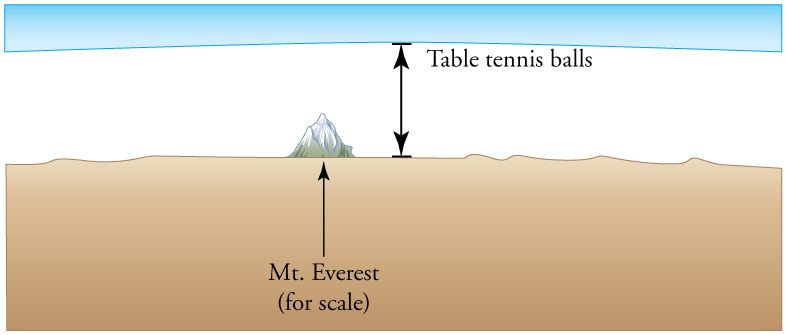| << Chapter < Page | Chapter >> Page > |
Inflate a balloon at room temperature. Leave the inflated balloon in the refrigerator overnight. What happens to the balloon, and why?
How many molecules are in a typical object, such as gas in a tire or water in a drink? We can use the ideal gas law to give us an idea of how large typically is.
Calculate the number of molecules in a cubic meter of gas at standard temperature and pressure (STP), which is defined to be and atmospheric pressure.
Strategy
Because pressure, volume, and temperature are all specified, we can use the ideal gas law , to find .
Solution
1. Identify the knowns.
2. Identify the unknown: number of molecules, .
3. Rearrange the ideal gas law to solve for .
4. Substitute the known values into the equation and solve for .
Discussion
This number is undeniably large, considering that a gas is mostly empty space. is huge, even in small volumes. For example, of a gas at STP has molecules in it. Once again, note that is the same for all types or mixtures of gases.
It is sometimes convenient to work with a unit other than molecules when measuring the amount of substance. A mole (abbreviated mol) is defined to be the amount of a substance that contains as many atoms or molecules as there are atoms in exactly 12 grams (0.012 kg) of carbon-12. The actual number of atoms or molecules in one mole is called Avogadro’s number , in recognition of Italian scientist Amedeo Avogadro (1776–1856). He developed the concept of the mole, based on the hypothesis that equal volumes of gas, at the same pressure and temperature, contain equal numbers of molecules. That is, the number is independent of the type of gas. This hypothesis has been confirmed, and the value of Avogadro’s number is
One mole always contains particles (atoms or molecules), independent of the element or substance. A mole of any substance has a mass in grams equal to its molecular mass, which can be calculated from the atomic masses given in the periodic table of elements.

The active ingredient in a Tylenol pill is 325 mg of acetaminophen . Find the number of active molecules of acetaminophen in a single pill.
We first need to calculate the molar mass (the mass of one mole) of acetaminophen. To do this, we need to multiply the number of atoms of each element by the element’s atomic mass.
Then we need to calculate the number of moles in 325 mg.
Then use Avogadro’s number to calculate the number of molecules.

Notification Switch
Would you like to follow the 'College physics' conversation and receive update notifications?